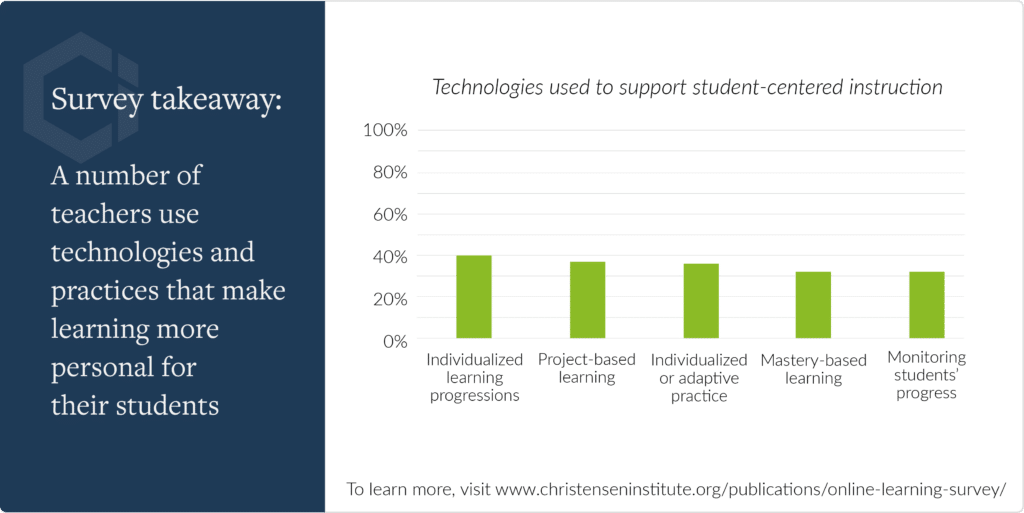INTRODUCTION
Slowly but steadily over the last decade, online learning expanded its role within K–12 schools: many districts bought devices and upgraded connectivity, some assignments and textbooks moved to the cloud, software increasingly displaced worksheets, and internet research became a norm. Then in early 2020, the global coronavirus pandemic rocked the world—and the arc of the online learning trend bent in heretofore unimaginable ways.
Practically overnight, the spread of COVID-19 caused a sudden shutdown of classroom-based instruction—the centuries-old emblem of formal education. Fortunately, the capabilities of the technological era—in which broadband connectivity, mobile communication, and video conferencing are increasingly common—meant that for the first time in world history, schools have had a substantive way to keep learning going while brick-and-mortar school buildings are shuttered. Nonetheless, by most accounts, the transition has not been easy.
At the Christensen Institute, we’ve spent the last decade studying trends in online and blended learning out of interest in their potential to enable student-centered learning. Yet in ways we never anticipated, COVID-19 brought these modalities to the forefront. As this new reality unfolds, we continue to document both the challenges and the innovations happening across the US K–12 landscape.
As our latest work on this front, we’ve launched what will be a series of nationally-representative surveys of teachers and education administrators that will capture snapshots of instructional practices during the pandemic. The complete findings from our first survey, along with details about our survey methodology and sample, are available in an accompanying report. This brief highlights interesting findings from the first survey, discusses trends in instructional practice that could redefine education in years to come, and offers theory-based insights and recommendations for both powering through the pandemic and evolving toward a more student-centered future.
Discover more stunning insights from our other surveys:
- Potential unfulfilled: COVID-19, the rapid adoption of online learning, and what could be unlocked this year (June 22, 2021)
- Carpe diem: Convert pandemic struggles into student-centered learning (August 31, 2021)
- Reaching toward recovery: Fall 2021 survey of teachers and administrators (December 7, 2021)
- A revealing reality: Spring 2022 survey of teachers and administrators (June 14, 2022)



